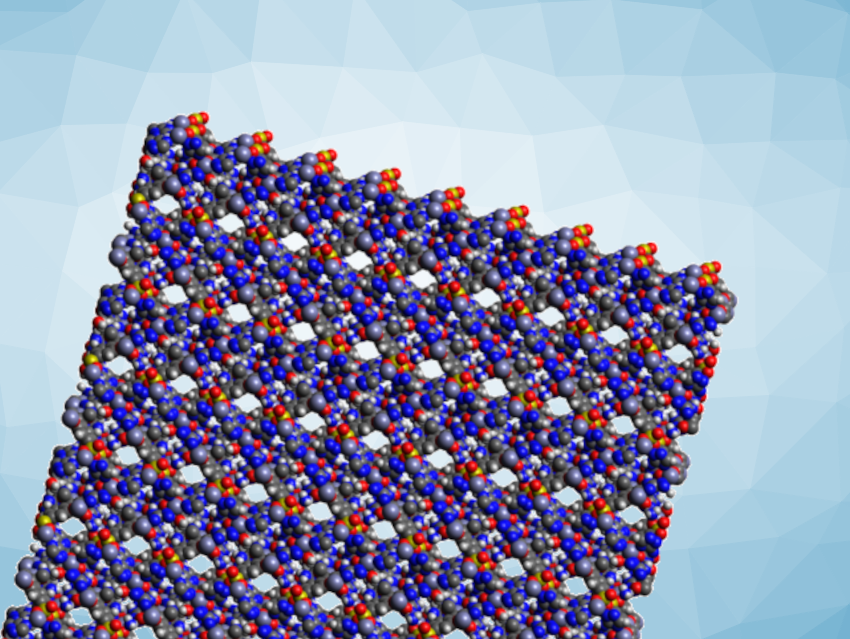Acetylene (C2H2) is an important chemical feedstock and fuel. Acetylene is produced, e.g., by the partial combustion of natural gas or as a byproduct in the cracking of hydrocarbons. Acetylene produced by these methods is usually mixed with some impurities, for example, methane and carbon dioxide. Methods for the capture and separation of acetylene are, thus, useful. Existing approaches can be costly, energy-intensive, and/or come with safety risks. Porous materials such as metal–organic frameworks (MOFs) could be promising in this context.
Guo-Ping Yang, Yao-Yu Wang, Northwest University, Xi’an, China, and colleagues have synthesized a Zn-based MOF functionalized with sulfonic acid and amino groups that can be used for gas adsorption and separation. The team prepared the MOF, [Zn3(SNDC)(AmTAZ)3(H2O)]•H2O•CH3CN, from 6-sulfonate-1,4-naphthalenedicarboxylic acid (H3SNDC) and 3-amino-1,2,4-triazole (AmTAZ).
The water was removed to activate the MOF, and the team obtained a crystal structure of the activated framework. They found that it has a 3D porous structure with 1D channels, featuring larger pores than before the activation, which are favorable for C2H2 adsorption. The MOF showed selective adsorption of acetylene over carbon dioxide and methane, which makes it promising for gas separation and acetylene purification.
- Pure separation of acetylene based on a sulfonic acid and amino group functionalized Zn-MOF,
Yu-Xin Deng, Guo-Ping Yang, Yao-Yu Wang,
Chem. Commun. 2024.
https://doi.org/10.1039/d4cc00863d


